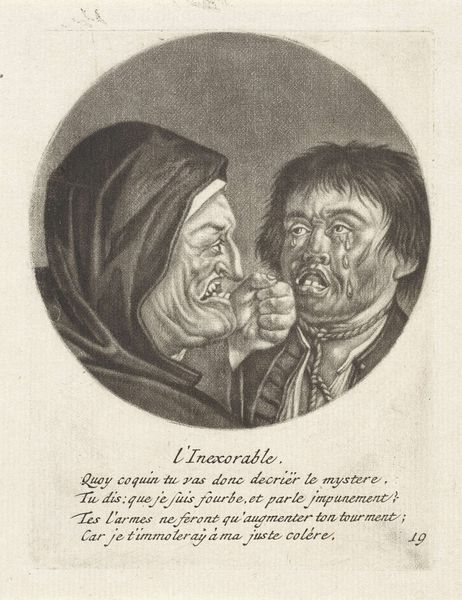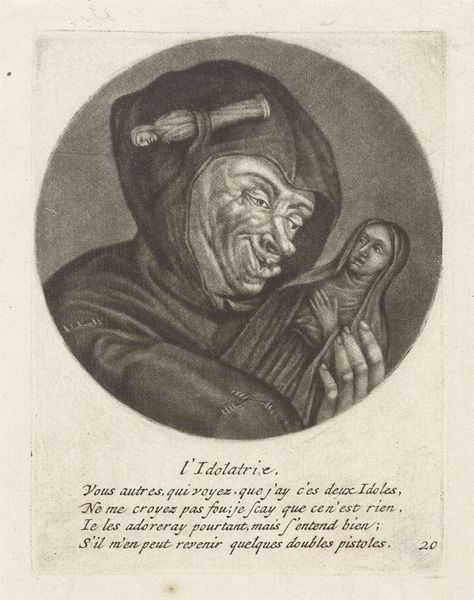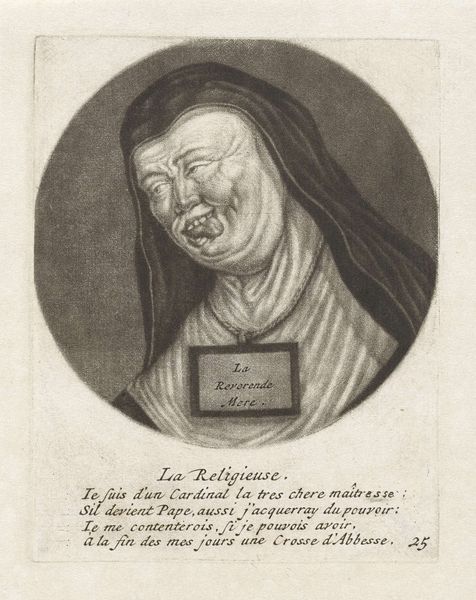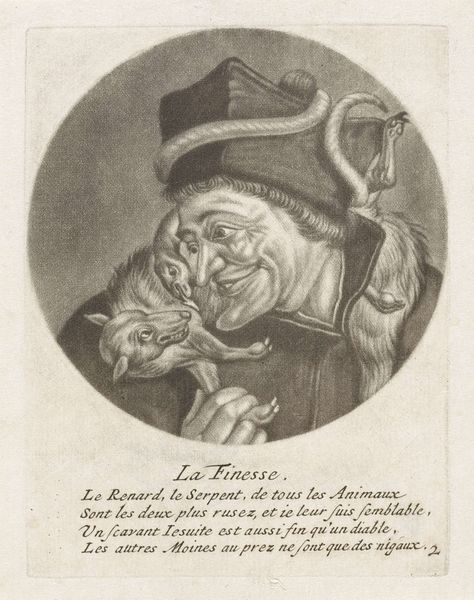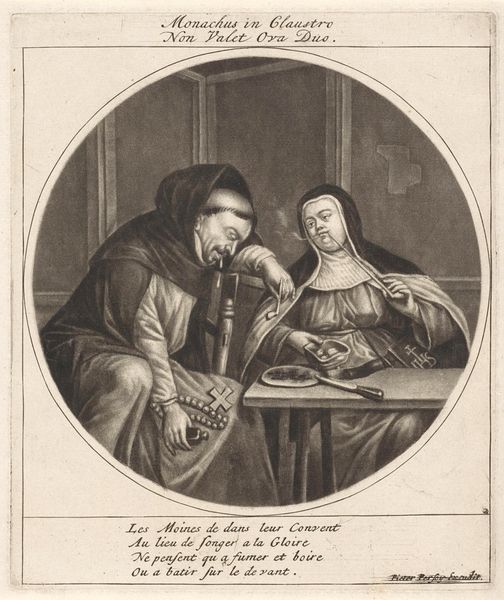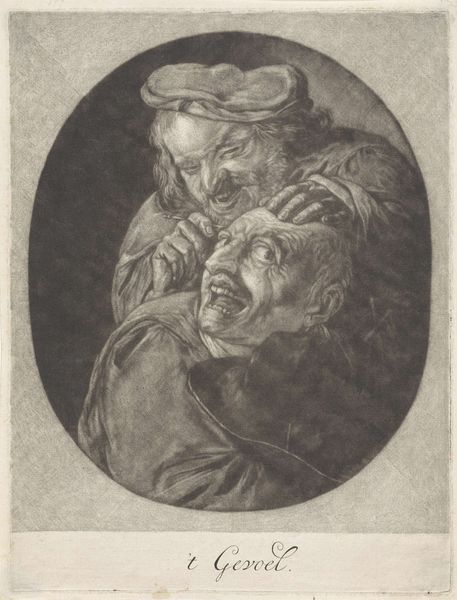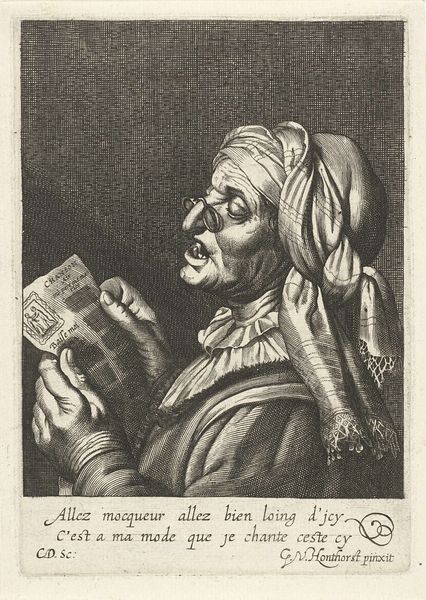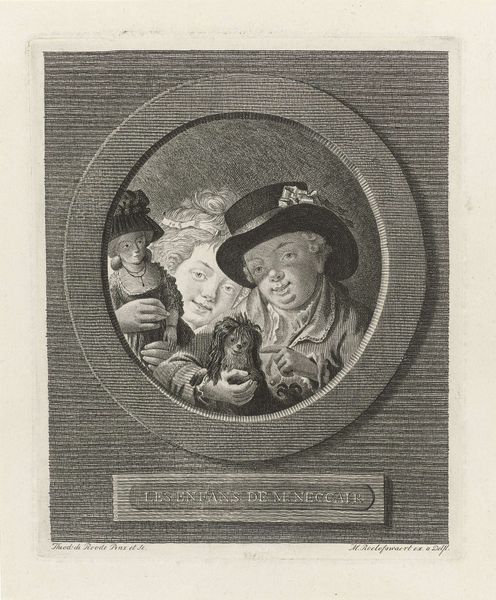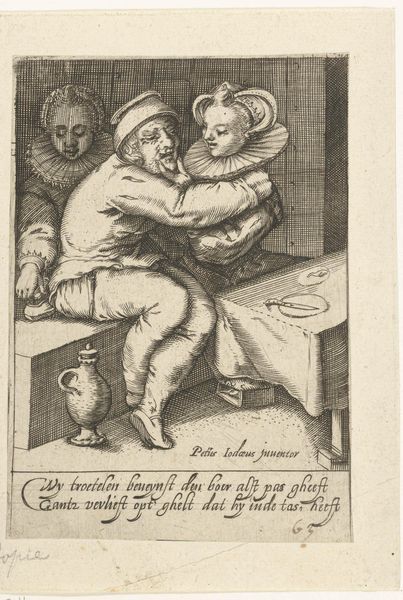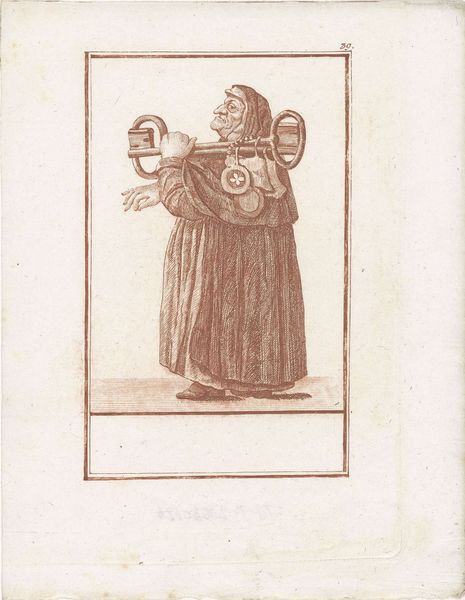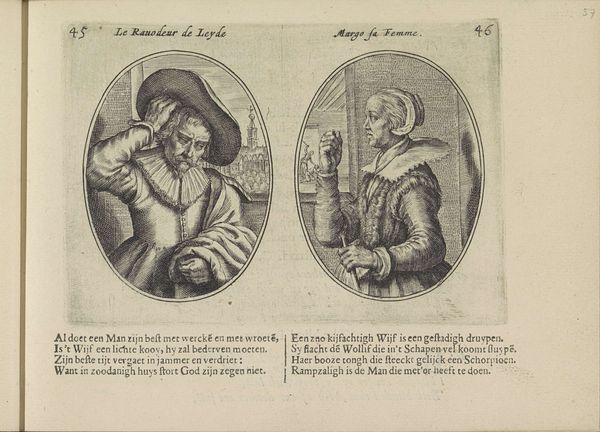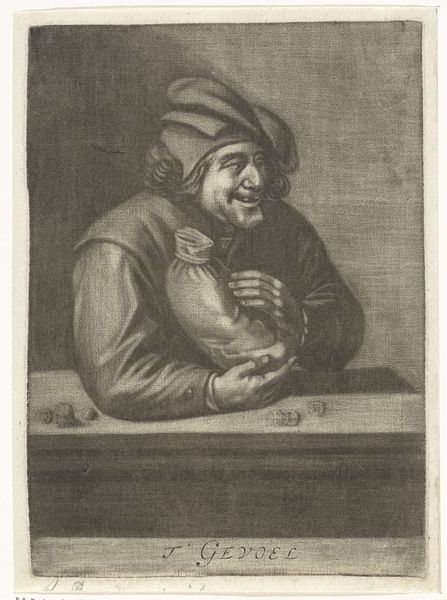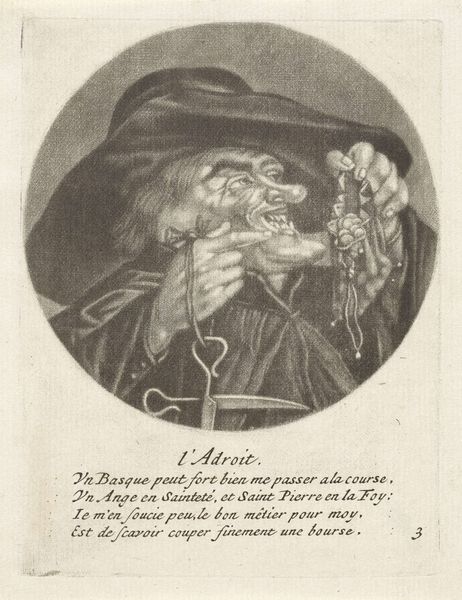
print, etching, engraving
#
narrative-art
#
baroque
# print
#
etching
#
old engraving style
#
genre-painting
#
engraving
Dimensions: height 115 mm, width 90 mm
Copyright: Rijks Museum: Open Domain
Curator: Here we have "De Biecht," or "The Confession," an etching and engraving print of unknown size by Jacob Gole. It may date to between 1670 and 1724 and resides in the Rijksmuseum's collection. The work illustrates a nun and a friar cheek to cheek against a shadowy background with a hanging rectangular object on the wall behind. Editor: My first thought? What a lecherous-looking monk! His eyes glitter with mischief, and that suggestive closeness with the nun—the whole image just radiates mischievous intent. It feels so Baroque with all the implied tension and humor. It's hard to miss all of that even without color. Curator: Absolutely, the Baroque loved these contrasts of light and dark, both literally and figuratively. Gole uses the etching to great effect to really give the impression of drama. I love that you honed in on the mood, because there is something about confessionals and the secrets that people whisper to priests and religious figures. Editor: There's such an imbalance, isn't there? In their proximity and knowing smirks, these figures have the confessional inverted—as if sharing secrets about, or even participating in, sinful behavior. Gole also plays up the conventional images associated with both of them; and look closely at those 'RR' monograms they bear... Curator: Right, those elaborate "MR" monograms aren’t part of traditional habits. They become personal insignia rather than signs of devotion, signaling wealth, belonging or status. It emphasizes that hypocrisy. There is so much happening beneath the surface. Gole teases at a complex network of moral, social, and psychological ambiguities. Editor: Yes! It transforms the entire meaning of "confession" from an act of repentance to, perhaps, a shared conspiracy or inside joke. And with that suggestive gaze... Well, Gole seems to wink at the viewer. Curator: Which ultimately implicates us in this whole scenario. We become voyeurs to their little rendezvous. Editor: True. It gives one pause about trust, redemption and self-presentation within powerful institutions. It feels like a mirror held up to certain practices. Curator: This work speaks to the fragile boundaries between piety and playfulness. Editor: A compelling conversation-starter even now, wouldn’t you say?
Comments
No comments
Be the first to comment and join the conversation on the ultimate creative platform.
